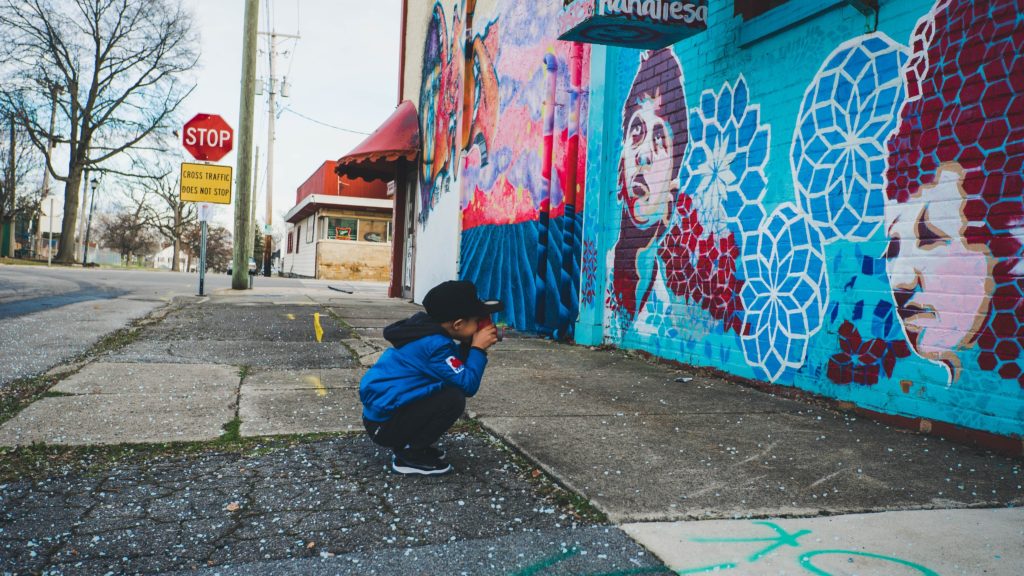Curating a Promising Future through Artistic Literacy

Photo by Chris Benson on Unsplash
“In curatorial practice, attending to decisions made in selecting, organizing, analyzing, and documenting content, as well as reviewing the evidence of learning, opens layers of realizations and insights for teachers and their students. Increasing opportunities to reflect in process as well as at the end of a lesson yields…aha moments and insight[s]. As one teacher shared, “This work puts the thinking back into teaching and learning.”¹
Now more than ever, teachers and students need support in an ever-changing educational environment that has been ridden with social and emotional challenges, learning loss and changing health and safety conditions. By their nature, the arts encourage student voice and choice, inviting students to build capacities that lead to becoming resilient and curious learners. The arts can address the critical social and emotional needs of diverse students while providing opportunities for them to make connections through artistic literacy, curation and interdisciplinary learning.
Teachers can be curators of educational experience, creating space for structures and processes in arts-specific and arts-integrated learning – where students explore connections, relationships and applications across the curriculum through dance, media arts, music, theatre and visual arts.
A curatorial approach to teaching empowers the practitioner to make choices that impact teaching and learning. One generally thinks of a curator as a person in a museum who is responsible for the care, selection, preservation and presentation of artifacts or artworks. Teachers are also curators as they select the standards they address, the curriculum they use, and the student work and learning results they document.
A curator selects, foregrounds, and presents ideas and information. This lens adds “a new level of intentionality and expertise to your process and can have a profound effect on your work.”² A curatorial teacher gathers and reflects on evidence of learning in the classroom to deepen their own practice and to learn more about the growth of their students. The arts provide many ways that students can demonstrate their learning, revealing many indicators for customized instructional approaches.
Educators can apply skills of curation as they:
- develop their own expertise
- reflect on their practice and creative choices in the classroom
- select materials that reflect the diversity and learning styles of their students
- document and tell the story of learning
These curatorial approaches can create a feedback loop for educators to tune into the impact of their intentional choices and connect educators and their students to what’s unfolding in their classroom. “At the core of a curatorial approach is a careful tending to the needs of diverse students and creating space for many ways of knowing. The goal is to bring in more voices and new examples, so students see themselves and trust that their experiences are valued.”³
Developing creative capacities through arts integration while curating key educational experiences opens a wide range of opportunities to dig deeper and highlight decision junctures that invite a host of teachable moments and analysis. Teachers do this by planning for the incubation of ideas, taking time for the experimentation that is part of any creative process and inviting students to translate ideas through one or more art forms. With a critical eye on curating, teachers often thrive as they see students develop multiple means of demonstrating their understanding.
In the context of COVID-19, many educators are addressing gaps that have resulted from pandemic-challenged learning environments. Effective professional learning propels teachers to employ curatorial skills to create vibrant learning spaces, respond to needs of students in these times, and use evidence of learning as a critical means of formative assessment in the classroom.
Imagine a world without the arts! We urge decision makers to consider providing professional learning opportunities for curation, arts learning and innovation so that our students leave 2022 with new possibilities for artistic literacy.
¹ Donovan, L. & Anderberg, S. (2020). Teacher as Curator. New York, New York: Teachers College Press.
² Donovan & Anderberg, Teacher as Curator, 8.
³ Donovan & Anderberg, Teacher as Curator, 182.



